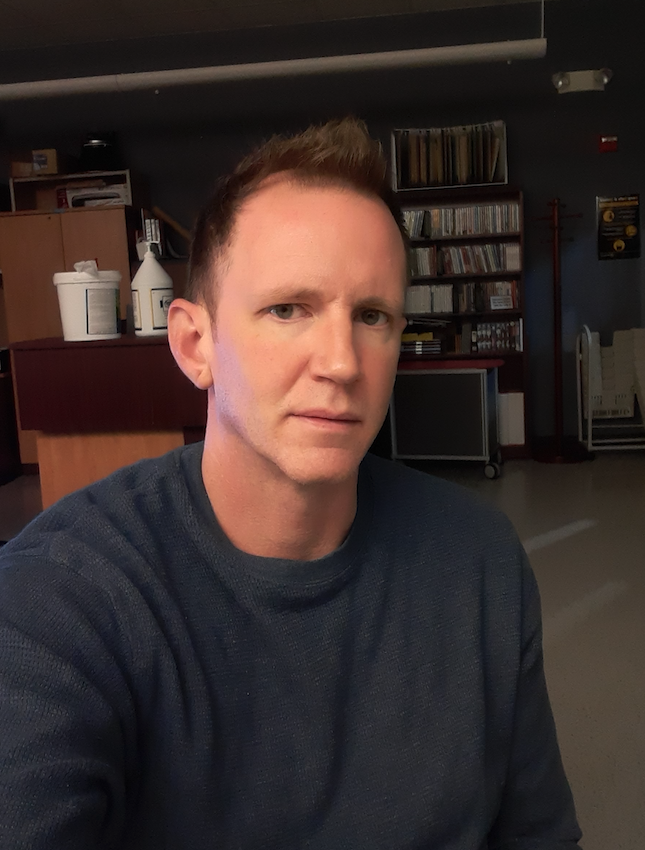John King

Statement of Creative Work
My personal artistic aesthetic is derived from an appreciation cultivated from an
early age of
representative illustration, first from classic American Realist such as Edward Hopper,
Andrew
Weyeth and Norman Rockwell and later by international illustration styles that I experienced
as a dependent on a US Army base in Camp Zama, Japan from 1981-84.
I remember developing finished pieces and diversifying my mediums in very formative
high
school art classes and especially being exposed to Drawing from the Right Side of the Brain,
which I remember as a young adult illuminated the possibility of artistic talent being
something
that can be achieved through incremental growth and persistence without a seemingly
inherent predisposed genetic talent.
The Savannah College of Art and Design afforded me the tools and techniques, history
and
anthology of electronic and multimedia graphics and imagery as I earned a BFA and
MFA in
Computer Art, but I remember feeling compelled to produce a thesis show that married
traditional mediums with digital prints and a computer animation. My thesis exhibit
included
three oil on canvas pieces.
I still work to refine an illustration style evocative of my early enthusiasms, and
can happily
state that I still retain a student’s approach to learning new methods and discerning
which
digital imaging software best complements my aesthetics and can deliver my colors,
forms,
proximities, balances and textures.
I have steadily built a signature style of biomedical vector illustration during my
eight years of
service as a non-employee vendor for The American College of Rheumatology. This also
gives me an intensive challenge whereas I am tasked to achieve communication solutions
visually for extremely nuanced subject matter to an extremely intelligent audience.
Statement of Equity, Diversity, and Inclusion
From 2006-2018, I served as a faculty member at The Art Institute of Atlanta, a four
year institution in Sandy Springs, Georgia. Through this experience I was afforded
the opportunity to engage with an extremely wide range of students from almost every
demographic, including a large proportion of non-traditional students, including older
and second career pursuants, first generation higher education students within their
families, and many students who were veterans of the US Military. Being the son of
a retired Army officer, I was particularly impressed with the resources afforded the
veterans at this institution. I was also able to develop a fellowship with international
students and faculty.
During my twelve years at the institution and several quarters at the satellite campus in Decatur, Georgia, I was able to observe and interact with a shared culture, both on campus and within my involvement with the student chapter of the AIGA group. This group would often attend and participate with other regional colleges in events such as portfolio reviews and pin-up shows, a juried competition. The diverse curriculum maps of that institution I believe were effective in promoting a universal campus. The schools of Design, Media Production, Fashion, and Culinary Arts blended students from unique backgrounds, with different strengths and learning goals.
I am an assistant professor at Kennesaw State University, which in 2021 has an enrollment approaching 38,000. This institution has attracted students from over 92 countries to its two metro Atlanta campuses. I see the effects of this growth in my classroom within a representation of a profound and highly talented and accomplished undergraduate culture and a bustling campus culture.
Although it was difficult when COVID-19 closed the physical presence of our classrooms,
I believe it afforded me the opportunity to expand my thinking about issues of equity
and inclusion in the classroom. I worked to develop learning aids and course materials
that would engage students and hopefully transcend some of the perceived limitations
of this lockdown. When we shifted to a hybrid classroom, it became even more necessary
to develop multiple platforms by which students could engage with the material, and
in each unit, I revised my delivery of the course content to utilize a combination
of detailed video tutorials, alternative projects, and guided navigation through the
newly-free “freebie” resources offered in this extraordinary time. Exploring multiple
perspectives and finding alternate routes of communication is at the heart of my work
in digital media, so I prioritize those qualities in how I present course material
-- now more than ever.









